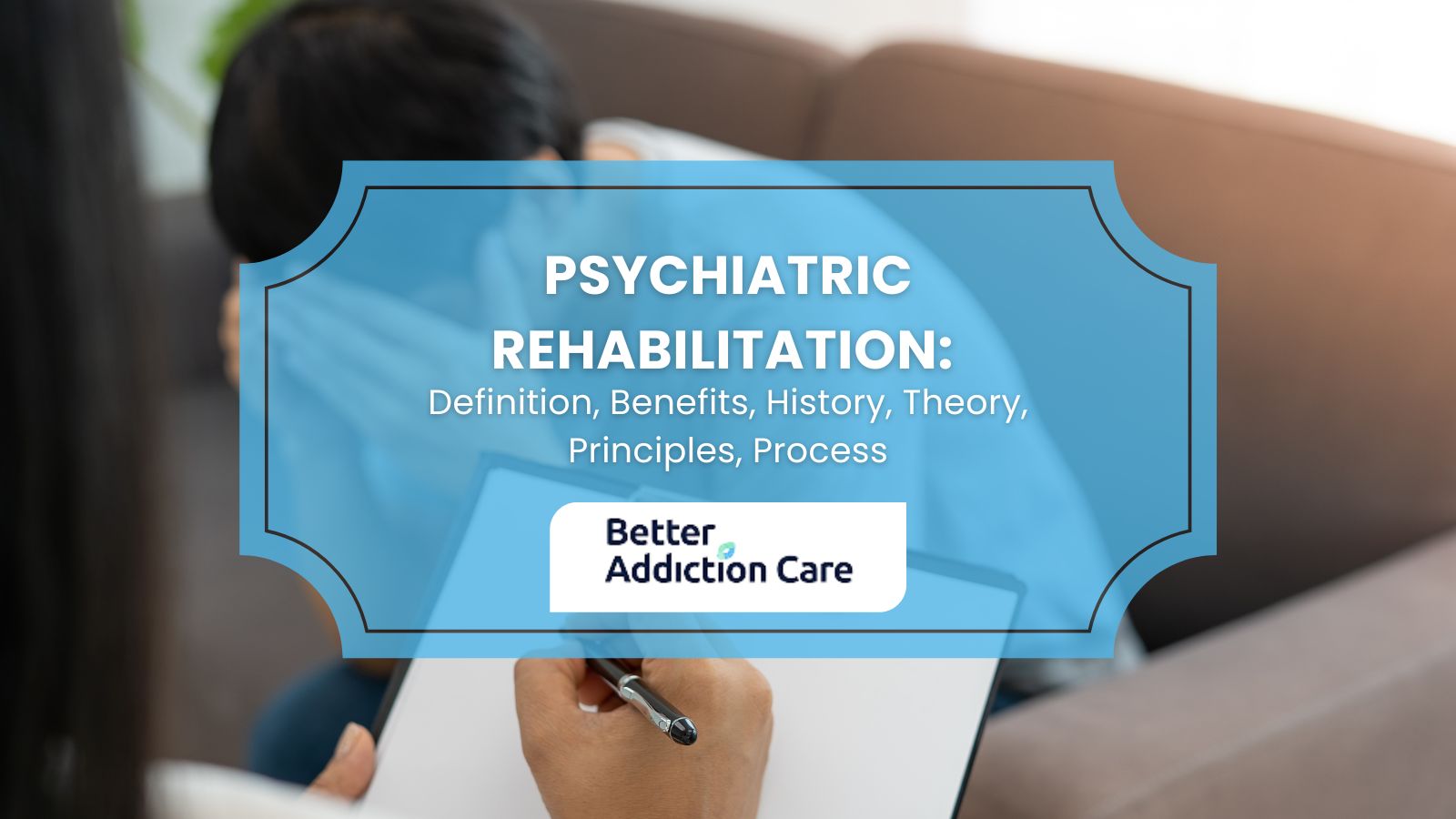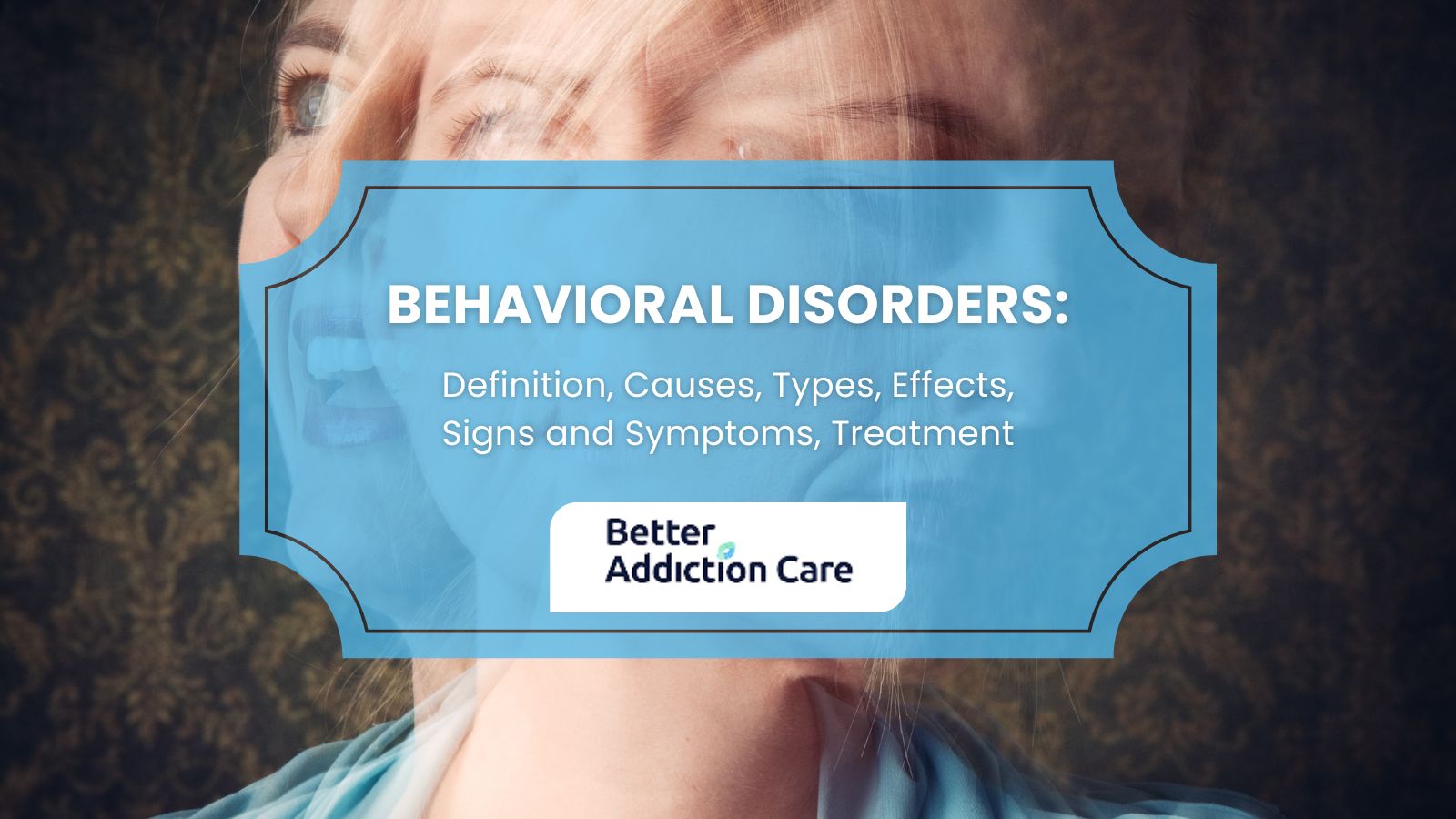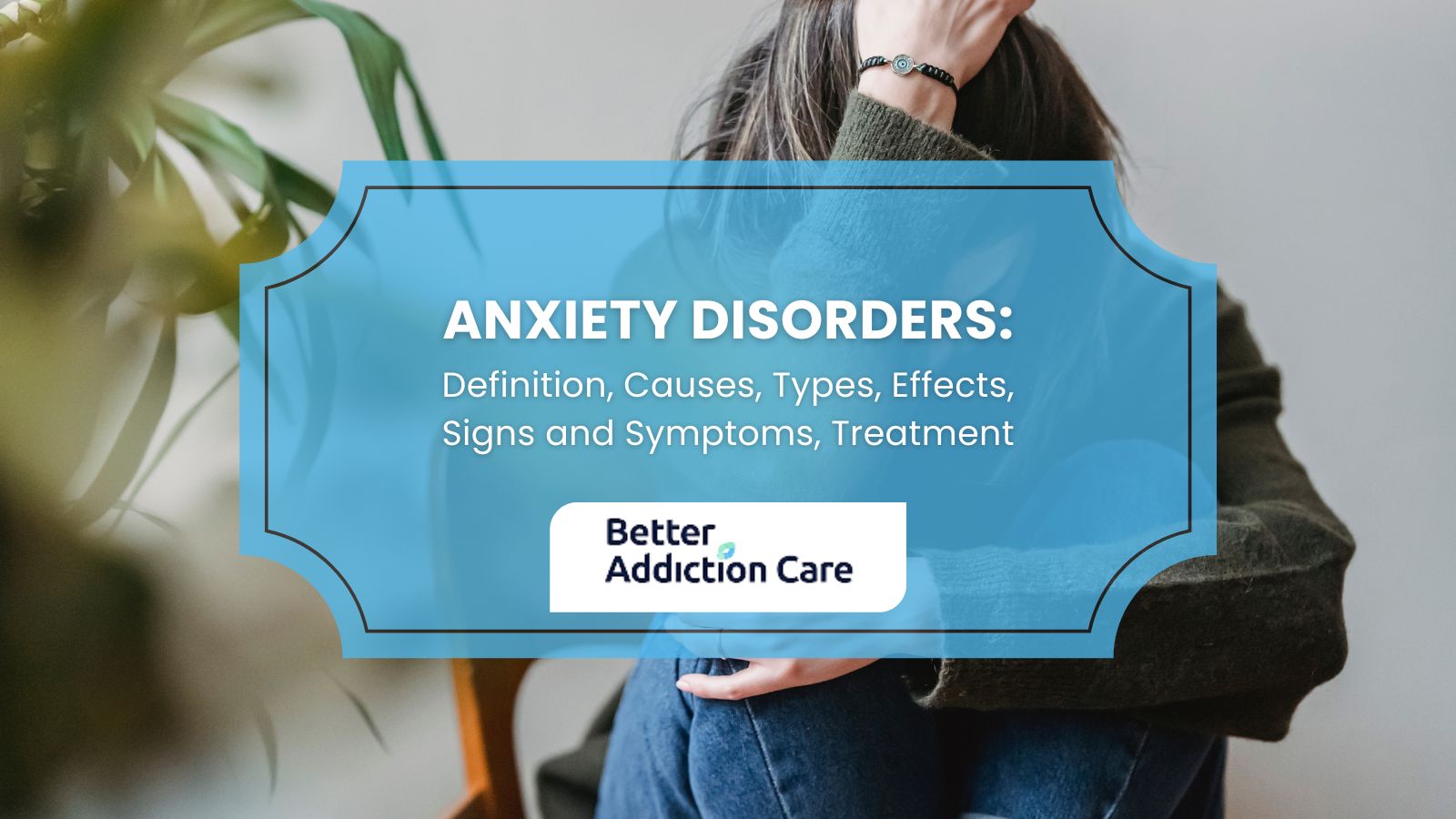Mental Health Awareness Month: Definition, Importance, History, Impact
Mental Health Awareness Month is a nationwide observance dedicated to raising awareness surrounding mental health. From anxiety and depression to trauma and co-occurring disorders, Mental Health Awareness Month highlights the broad range of challenges people face and emphasizes that mental health is just as important as physical health. About 6% of U.S. adults (15.4 million) had a serious mental illness in 2022. Serious Mental Illness prevalence is higher among females (7.1%) than males (4.8%), and highest in young adults aged 18–25 (11.6%) according to the National Institute of Mental Health.
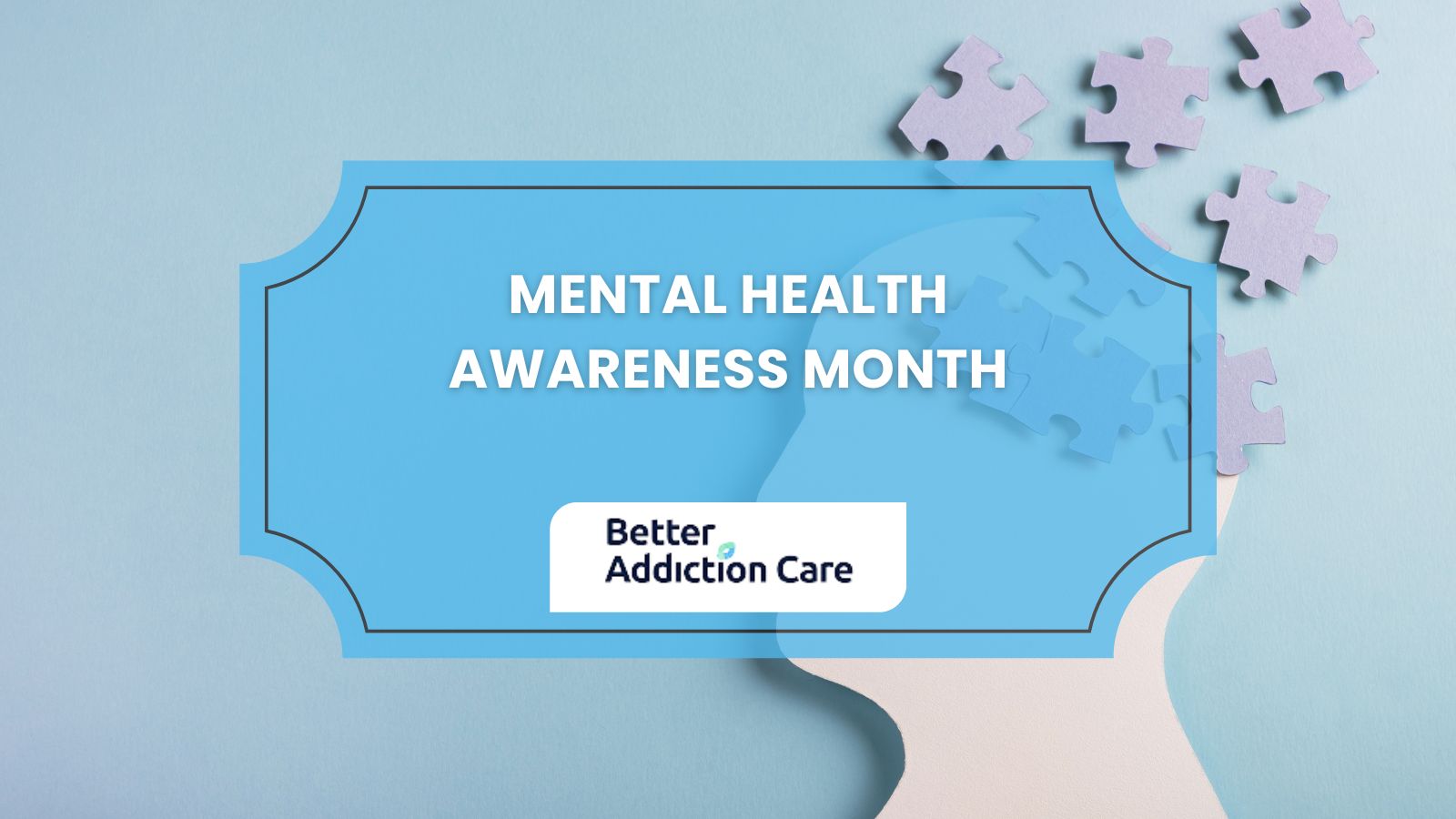
Mental Health Awareness Month is a nationwide observance dedicated to raising awareness surrounding mental health. From anxiety and depression to trauma and co-occurring disorders, Mental Health Awareness Month highlights the broad range of challenges people face and emphasizes that mental health is just as important as physical health. About 6% of U.S. adults (15.4 million) had a serious mental illness in 2022. Serious Mental Illness prevalence is higher among females (7.1%) than males (4.8%), and highest in young adults aged 18–25 (11.6%) according to the National Institute of Mental Health.
In 2025, Mental Health Awareness Month will be observed throughout the month of May. During this time, mental health organizations, healthcare providers, schools, and advocacy groups across the United States will host events, share resources, and encourage open conversations to foster understanding and connection. Many campaigns also use this time to promote screening tools, highlight mental health services, and advocate for policy change that improves access to care.
Recognizing Mental Health Awareness Month is essential because millions of Americans struggle with mental health conditions, yet stigma, misunderstanding, and lack of resources continue to prevent many from seeking help. By shining a light on mental health, this annual observance helps normalize these discussions, encourages early intervention, and fosters a culture of compassion and support. Raising awareness not only empowers individuals to prioritize their well-being, but also helps communities become stronger, healthier, and more inclusive.
What is Mental Health Awareness Month?
Mental Health Awareness Month is a national observance in the United States dedicated to increasing awareness of mental health issues, promoting mental wellness, and reducing the stigma surrounding mental illness. It was first established in 1949 by Mental Health America (MHA), formerly known as the National Association for Mental Health. The initiative was developed to bring public attention to the importance of mental health and the need for proper care, understanding, and support for those living with mental health conditions. According to a National Survey on Drug Use and Health and (SAMHSA) 1 in 5 American adults will have a diagnosable mental health condition in any given year. The NSDUH also states that 46% of Americans will meet the criteria for a diagnosable mental health condition at some point in their lives
The observance takes place every May and includes nationwide efforts to provide education, share resources, host community events, and encourage individuals to seek help if they’re struggling. MHA launched the first Mental Health Awareness Month campaign from Washington, D.C., and since then, it has grown into a widely recognized movement supported by mental health professionals, advocacy groups, schools, healthcare systems, and policymakers across the country.
Over the decades, Mental Health Awareness Month has played a crucial role in changing the way society views mental health, shifting the conversation from silence and shame to advocacy, inclusion, and action.
Why is Mental Health Awareness Month Important?
Mental Health Awareness Month is important because it brings attention to the realities of mental health struggles that millions of people face each year. Young adults (18–25) have the highest rates of any mental illness (36.2%) according to the National Institute of Mental Health. By dedicating time to educate the public, this observance helps reduce stigma, which is one of the biggest barriers preventing individuals from seeking the care they need. When people feel ashamed or misunderstood, they are less likely to reach out for support, Mental Health Awareness Month aims to change that by encouraging open, compassionate conversations.
This month also emphasizes the importance of early intervention, access to quality care, and the role mental health plays in overall well-being. It’s an opportunity to highlight disparities in mental health access, especially among underserved populations, and to promote tools and resources that empower individuals to take charge of their mental wellness.
Recognizing Mental Health Awareness Month ultimately fosters a more informed, supportive, and proactive society, one that not only responds to mental illness but also works to prevent it by addressing stress, trauma, and other contributing factors early on.
What is the History of Mental Health Awareness Month?
The history of Mental Health Awareness Month began in 1949 by Mental Health America (MHA), formerly known as the National Association for Mental Health. The organization, founded by Clifford W. Beers, a mental health advocate who had personal experience with mental illness and institutional care, launched the initiative to increase awareness and improve understanding of mental health conditions across the United States.
Since its inception, the month of May has been recognized each year as a time to raise public consciousness about the importance of mental well-being and to combat the stigma associated with mental illness. Early efforts focused on education and advocacy through media campaigns, informational pamphlets, and community outreach events.
Over the decades, Mental Health Awareness Month has evolved into a nationally supported movement, embraced by government agencies, health organizations, schools, and communities. Today, it continues to grow in impact, promoting early intervention, support access, and the normalization of mental health conversations across all sectors of society.
What is the Impact of Mental Health Awareness Month?
The impact of Mental Health Awareness Month has significantly influenced public perception and understanding of mental health issues. By dedicating the month of May to mental health education and advocacy, it has helped reduce stigma, encourage open conversations, and promote early intervention. This observance has empowered individuals to seek help and has fostered a more supportive environment for those affected by mental health conditions.
Key Impacts of Mental Health Awareness Month:
-
Increased Public Awareness: Educational campaigns during Mental Health Awareness Month have led to greater public understanding of mental health issues, contributing to a more informed society.
-
Policy and Funding Advocacy: The observance has spurred advocacy efforts that have influenced mental health policies and increased funding for mental health services.
-
Community Engagement: Events and activities organized during the month have engaged communities, promoting mental wellness and providing resources for those in need.
-
Support for Early Intervention: Highlighting the importance of early detection and treatment, Mental Health Awareness Month has encouraged individuals to seek help promptly, improving outcomes.
According to the National Institute of Mental Health, in 2022, approximately 59.3 million adults in the United States experienced mental illness, representing 23.1% of all U.S. adults . Despite this prevalence, stigma and lack of access to care remain significant barriers. Mental Health
By fostering a culture of openness and support, Mental Health Awareness Month continues to be a vital force in improving mental health outcomes and ensuring that individuals receive the care and understanding they deserve.
Who Benefits from Mental Health Awareness Month?
The people who benefit from Mental Health Awareness Month include individuals across all walks of life. Whether someone is living with a mental health condition, supporting a loved one, or simply seeking to learn more, this national observance promotes greater understanding and compassion across society. About 4.5 million children in the U.S. have been diagnosed with anxiety disorders showing the need for treatment at a young age.
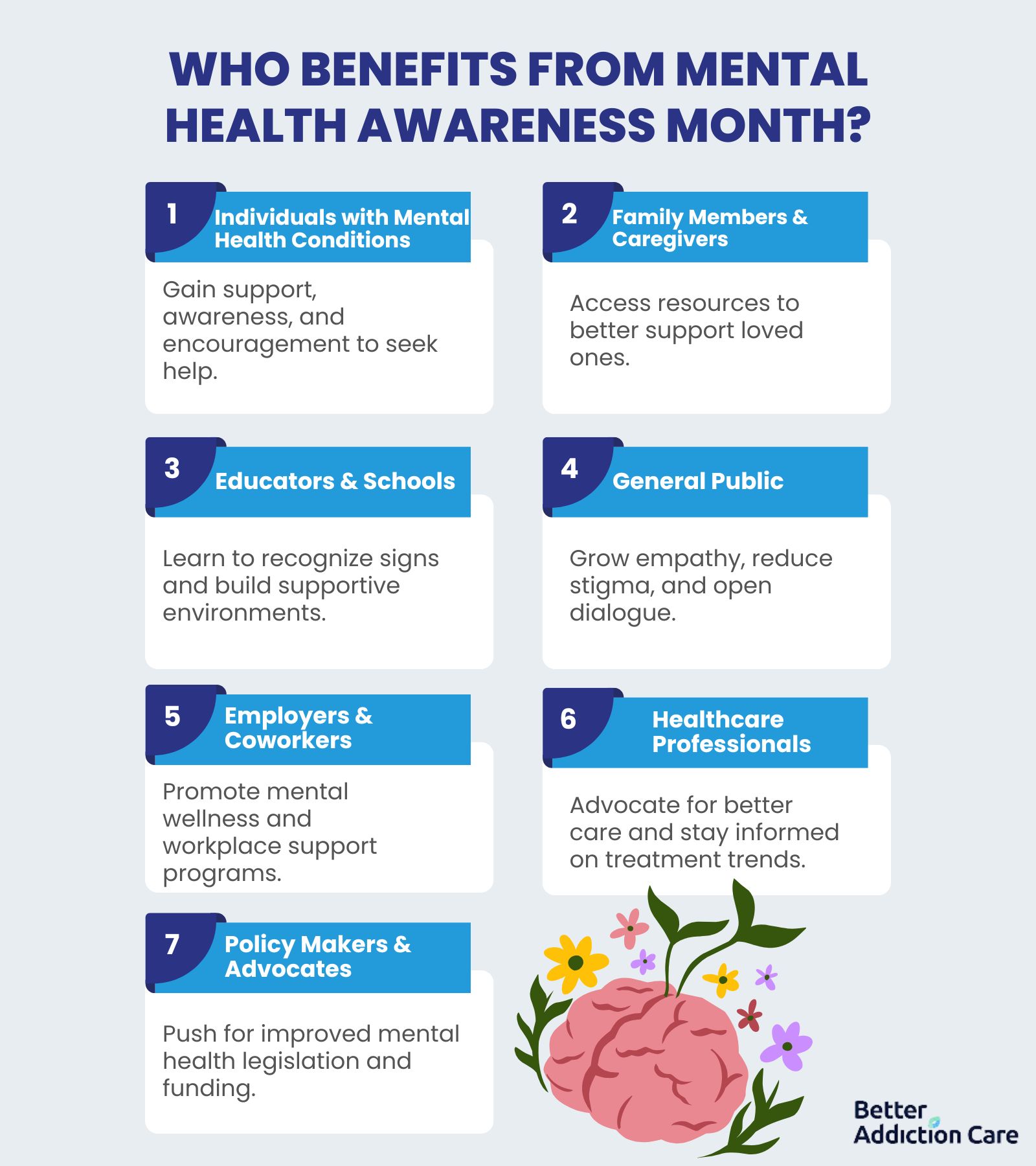
Those who benefit from Mental Health Awareness Month include:
-
Individuals with Mental Health Conditions: Raises awareness, reduces stigma, and encourages help-seeking behavior for those living with depression, anxiety, PTSD, and other conditions.
-
Family Members and Caregivers: Provides resources, education, and support to help families better understand and assist loved ones facing mental health challenges.
-
Educators and School Communities: Equips teachers, counselors, and school staff with tools to recognize signs of mental distress and foster healthier learning environments.
-
Employers and Coworkers: Promotes mental health in the workplace through initiatives that support work-life balance, stress management, and mental wellness benefits.
-
Healthcare Professionals: Highlights the need for better access to care and continuing education on evolving mental health treatments and strategies.
-
Policy Makers and Advocates: Encourages legislation and funding to improve access to mental health services and support public health programs nationwide.
-
The General Public: Fosters empathy, understanding, and a more open dialogue about mental health, benefiting communities at large.
What Mental Health Disorders Are Highlighted During Mental Health Awareness Month?
The mental health disorders highlighted by Mental Health Awareness include a wide range of mental health conditions including depression, anxiety, PTSD, bipolar disorder, OCD, SUD and more. The goals of mental health awareness month are increasing public understanding, reducing stigma, and promoting early treatment. These efforts help individuals recognize symptoms of their mental health disorders, seek help, and support others in their community.
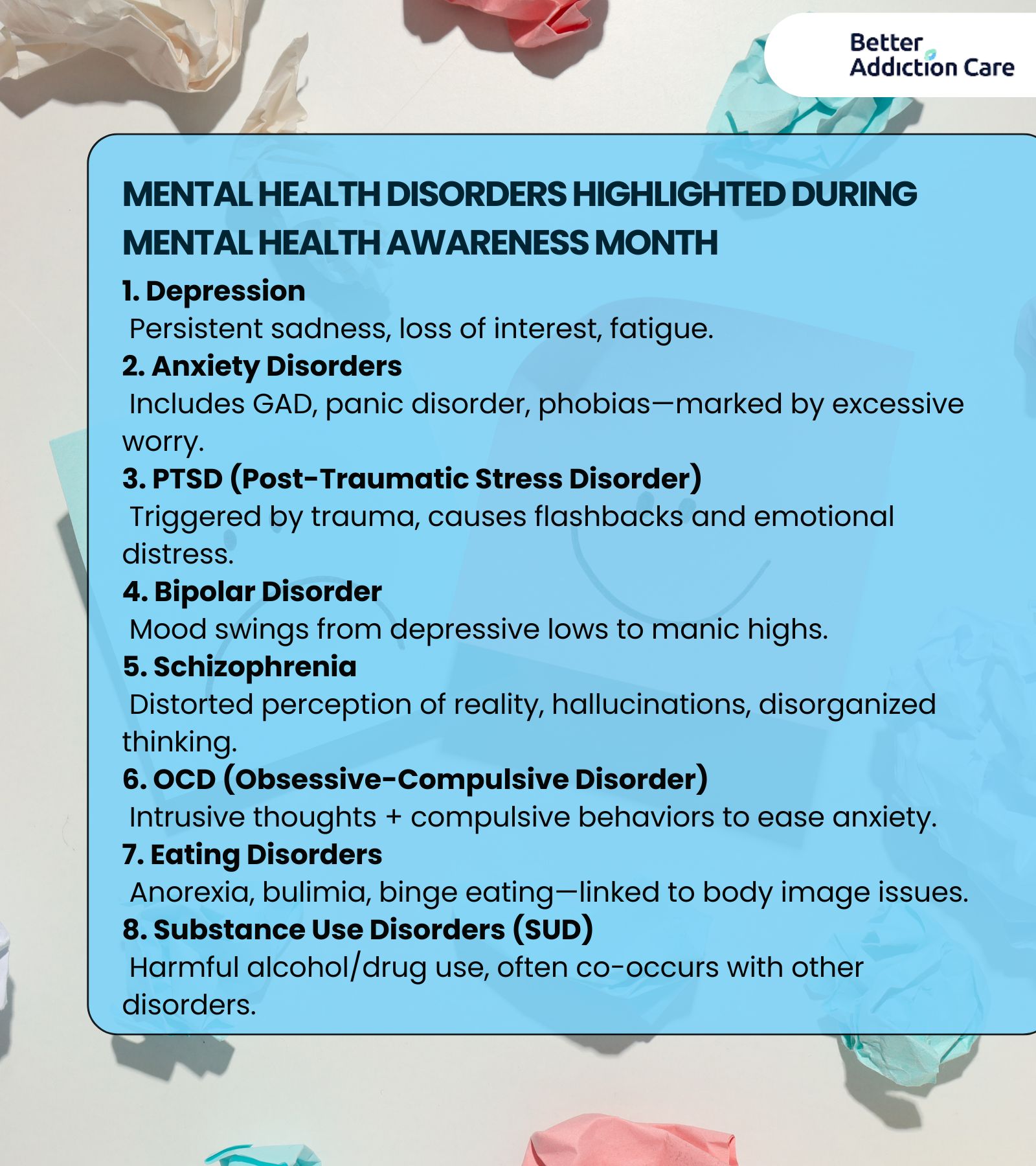
The mental health disorders highlighted by Mental Health Awareness Month are detailed below:
Depression
A common mood disorder characterized by persistent feelings of sadness, hopelessness, and a loss of interest in activities, often affecting energy, sleep, and concentration. 29% of U.S. adults have been diagnosed with depression at some point in their lives. 17.8% of adults currently have or are being treated for depression according to the CDC in 2023.
Anxiety Disorders
This group includes generalized anxiety disorder, panic disorder, and various phobias, all marked by excessive fear or worry that interferes with daily activities. Anxiety Disorders affect about 40 million adults (19% of the U.S. adult population) each year, making them the most common mental health disorders. Women are 1.6 times more likely than men to be affected according to Anxiety & Depression Association of America (ADAA), 2024
Post-Traumatic Stress Disorder (PTSD)
A trauma-related condition where individuals experience flashbacks, nightmares, and emotional distress following exposure to a traumatic event. About 3.6% of U.S. adults experience PTSD each year and the lifetime prevalence is about 6.8% according to the National Institute of Mental Health (NIMH), 2023.
Bipolar Disorder
A mental health condition defined by dramatic shifts in mood, energy, and activity levels, ranging from depressive lows to manic highs. Bipolar disorder affects approximately 5.7 million adult Americans, or about 2.6% of the U.S. population age 18 and older every year according to the National Institute of Mental Health.
Schizophrenia
A severe psychiatric disorder that disrupts a person’s perception of reality, often causing hallucinations, delusions, and disorganized thinking. Schizophrenia affects about 1.1% of U.S. adults (roughly 3.6 million people) according to the National Institute of Mental Health.
Obsessive-Compulsive Disorder (OCD)
Characterized by intrusive, unwanted thoughts (obsessions) and repetitive behaviors or mental acts (compulsions) performed to relieve anxiety. Most common subtypes, such as borderline and obsessive-compulsive personality disorder, affect 2–8% of adults according to the American Psychiatric Association (APA).
Eating Disorders
These include anorexia nervosa, bulimia nervosa, and binge eating disorder, all involving unhealthy relationships with food, weight, and body image. 9% of the US population, or 30 million Americans will have an eating disorder in their lifetime according to Deloitte Access Economics. The Social and Economic Cost of Eating Disorders in the United States of America: A Report for the Strategic Training Initiative for the Prevention of Eating Disorders and the Academy for Eating Disorders.
Substance Use Disorders
Conditions where the repeated use of alcohol or drugs leads to clinically significant impairment, often co-occurring with other mental health disorders. 48.5 million Americans (16.7% of those age 12 and older) had a substance use disorder in the past year, according to SAMHSA.
How To Get Involved in Mental Health Awareness Month?
To get involved in Mental Health Awareness Month involves promoting awareness by wearing green, sharing your own personal struggles with mental health, participating in events, advocating for change and educating yourself and others.
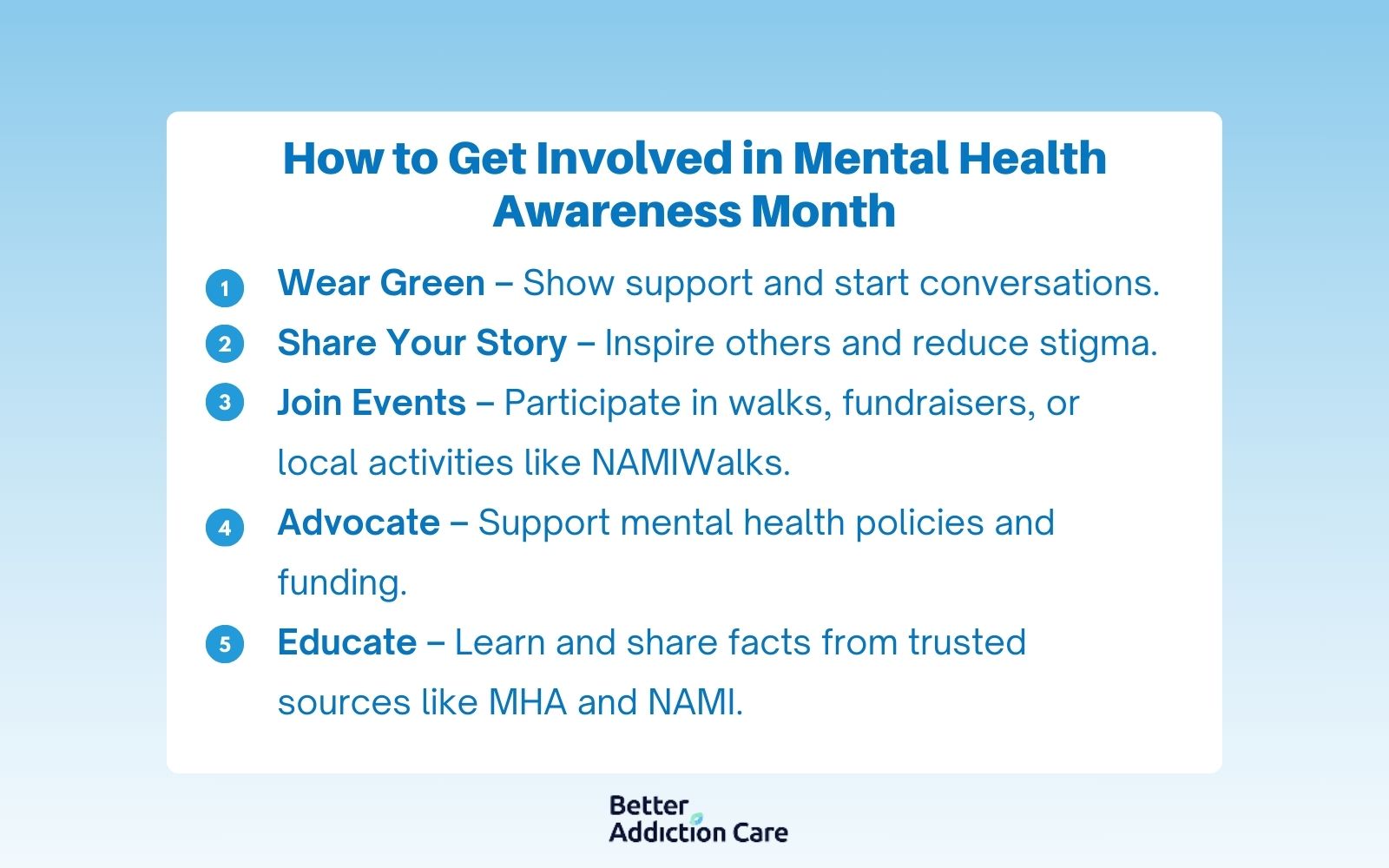
Here are the ways to get involved in more detail:
-
Wear Green: Green is the official color for mental health awareness. Wearing green clothing or accessories can show your support.
-
Share Your Story: Personal experiences can be powerful. Sharing your mental health journey can inspire others and reduce stigma.
-
Participate in Events: Join local or virtual events such as Mental Health America’s annual conference or NAMIWalks to raise awareness and funds. NAMIWalks is the National Alliance on Mental Illness’s largest signature fundraising program and, as of 2025, is recognized as one of the nation’s Top 30 Peer-to-Peer fundraising events for the fifth consecutive year. In its most recent campaign, NAMIWalks raised an unprecedented $15.8 million and registered a program-high 8,859 teams, with over 190 community walks taking place across the country according to the National Alliance on Mental Illness.
-
Advocate for Change: Engage in advocacy efforts to promote mental health policies and funding at local, state, or national levels.
-
Educate Yourself and Others: Utilize resources from organizations like Mental Health America and the National Alliance on Mental Illness to learn and share information about mental health.
Are There Specific Events or Campaigns During Mental Health Awareness Month?
Yes, there are specific events and campaigns that take place during Mental Health Awareness Month. They engage communities and promote mental well-being. Some notable examples include:
-
Mental Health America’s Annual Conference: A gathering that focuses on mental health education and advocacy.
-
NAMIWalks: Organized by the National Alliance on Mental Illness, these walks raise awareness and funds for mental health programs. The United Day of Hope is on May 17th and October 4th. Over 190 community Walks are presented by NAMI State Organizations and NAMI Affiliates from coast to coast. United by our unique experiences, journeys and stories, NAMIWalks is a beautiful celebration of each of us - individuals with mental illness, their family, their loved ones, their community.
-
Be Seen in Green Campaign: Encourages individuals and organizations to wear green and share photos on social media to promote mental health awareness.
-
Community Workshops and Webinars: Various organizations host educational sessions on topics like stress management, resilience, and mental health resources.
What is the theme for Mental Health Awareness Month in 2025?
The theme for Mental Health Awareness Month in 2025 is “Turn Awareness into Action,” as announced by Mental Health America (MHA). This theme emphasizes the importance of moving beyond merely recognizing mental health issues to actively engaging in efforts that promote mental well-being. It encourages individuals and communities to take tangible steps toward supporting mental health, such as initiating open conversations, advocating for mental health resources, and implementing supportive practices in daily life.
How Does Mental Health Awareness Month Help Reduce Stigma?
Mental Health Awareness Month helps reduce stigma by encouraging open discussion, promoting education, and empowering people to share their experiences. These efforts make it easier for individuals to seek help and feel supported in their mental health journey.
What Role Do Schools and Workplaces Play in Promoting Mental Health Awareness?
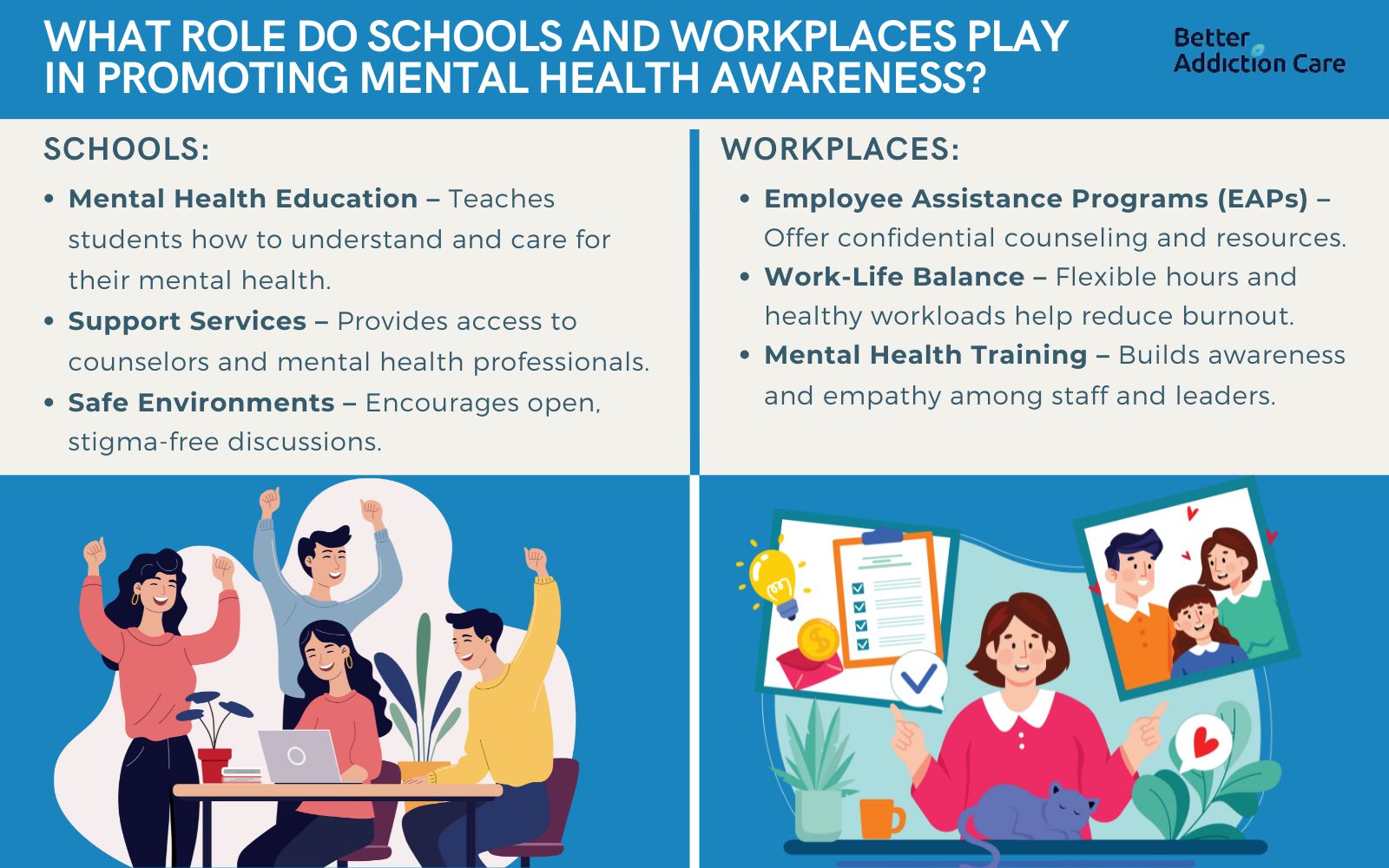
Schools and workplaces play a large role in promoting mental health awareness and support.
The way Schools promote mental health awareness includes:
-
Implementing Mental Health Education: Incorporating mental health topics into the curriculum helps students understand and manage their well-being.
-
Providing Support Services: Access to counselors and mental health professionals within schools ensures timely assistance for students.
-
Creating Safe Environments: Establishing a supportive atmosphere encourages students to seek help without fear of judgment.
Mental health awareness is supported in Workplaces through the following:
-
Offering Employee Assistance Programs (EAPs): EAPs provide confidential counseling and support services to employees.
- Promoting Work-Life Balance: Encouraging flexible schedules and reasonable workloads helps reduce stress.
- Conducting Mental Health Training: Educating management and staff about mental health fosters a more understanding and accommodating workplace culture.


